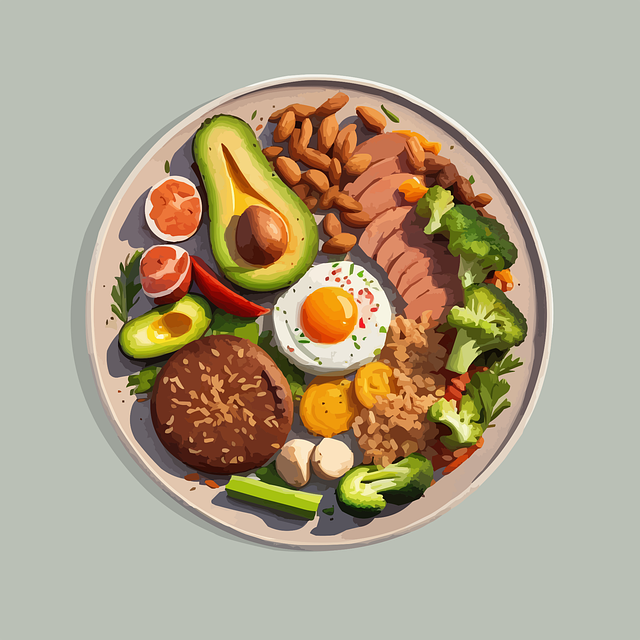
On a strict ketogenic diet, the body primarily relies on fat as its main source of energy, with only about 5% to 10% of energy intake coming from carbohydrates. This diet is characterized by high fat intake, moderate protein intake, and very low carbohydrate intake.
When carbohydrates are reduced, the body enters a metabolic state known as ketosis, in which stored fat is broken down into ketone bodies for energy instead of relying on circulating blood sugar from food. After reaching ketosis, the majority of cells utilize ketone bodies for energy until carbohydrate consumption resumes.
In the past, the ketogenic diet was exclusively employed in clinical environments for the purpose of decreasing seizures in children suffering from epilepsy.
According to Emily Stone, M.S., RD, founder of Eat to Enjoy, there is currently a significant interest in exploring the effectiveness of the diet in addressing various neurological conditions, cancer, diabetes, PCOS (polycystic ovary syndrome), obesity, high cholesterol, and cardiovascular disease. Additionally, individuals adopt the keto diet as a means to achieve weight loss.
When following a ketogenic diet, it may be perplexing to determine which foods are suitable for consumption, despite knowing that keto is a diet consisting of low-carb, high-fat, and moderate-protein. To provide clarity, we have compiled a guide categorizing foods into those that are permissible, those that should be restricted, and those that can be consumed sparingly.
Foods to eat
To maintain a healthy keto diet, choose whole, nutrient-dense foods like meat, fish, eggs, and non-starchy vegetables. Additionally, incorporate natural fats such as butter or olive oil. Refer to the provided food lists to select options that ensure your daily net carb intake stays below 20 grams (total carbs minus fiber).
1. Fish and seafood
Fish contains abundant quantities of B vitamins, potassium, and selenium. Additionally, it is high in protein and devoid of carbohydrates.
According to a review published in Prostaglandins, Leukotrienes and Essential Fatty Acids in 2022, salmon, sardines, mackerel, albacore tuna, and other fatty fish have high levels of omega-3 fats. These fats have been discovered to enhance hemoglobin A1c levels, which is a test that measures blood sugar levels over a 3-month period.
A review published in Advances in Nutrition in 2020 discovered that consuming fish regularly has been associated with a lower risk of chronic illness and better mental well-being. It is suggested to have a minimum of two 3-ounce portions of fatty fish per week.
2. Low-carb veggies
Nonstarchy vegetables possess a low calorie and carbohydrate content, yet they display higher levels of various nutrients, such as vitamin C and multiple minerals. Additionally, they incorporate antioxidants that serve to safeguard against harmful free radicals that damage cells.
To successfully rephrase the given text step by step while maintaining the same meaning, you could say: 1. The goal is to choose nonstarchy vegetables that contain fewer than 8 grams of net carbs in one cup. 2. Net carbs can be calculated by subtracting the fiber content from the total carbohydrates. 3. Vegetables such as broccoli, cauliflower, green beans, bell peppers, zucchini, and spinach meet this requirement.
3. Cheese
Cheese, with its lack of carbohydrates and high fat content, is a suitable choice for those following the ketogenic diet. Additionally, it is a good source of protein and calcium. It is important to be aware that a 1-ounce slice of Cheddar cheese contains approximately 5 g of saturated fat, a quantity that the American Heart Association advises to restrict in order to decrease the chances of heart disease.
4. Plain Greek yogurt and cottage cheese
Yogurt and cottage cheese both contain high levels of protein and calcium. Approximately 8 g of carbohydrates and 20 g of protein can be found in a serving of 7 ounces of plain Greek yogurt. On the other hand, a serving of 8 ounces of cottage cheese contains slightly over 6 g of carbohydrates and 28 g of protein.
In a study published in Nutrients in 2019, it was found that calcium and protein have the ability to decrease appetite and increase the feeling of being full. Opting for yogurts and cottage cheese with higher fat content can contribute to prolonging the feeling of fullness, thus making them suitable for inclusion in the ketogenic diet.
5. Avocados
When selecting fats that are good for the heart, opt for avocados, which contain a generous amount of both monounsaturated fat and potassium, a mineral that many Americans do not consume enough of.
According to a 2018 study published in The American Journal of Clinical Nutrition, replacing animal fats with plant fats such as avocados can enhance cholesterol and triglyceride levels. A medium avocado contains approximately 6 g of total carbohydrates, half of which (4.5 g) is fiber, as well as 360 milligrams of potassium, equivalent to roughly 8% of your daily requirements.
6. Meat and poultry
Meat, which is a crucial part of the ketogenic diet, is a valuable source of lean protein. A significant advantage of fresh meat and poultry is that they do not contain any carbohydrates and instead provide an abundance of B vitamins and various minerals like potassium, selenium, and zinc.
A 2021 review published in the European Journal of Epidemiology suggests that while processed meats such as bacon and sausage can be consumed on a keto diet, they may not be the most beneficial for heart health and could increase the likelihood of specific cancers. Therefore, it is advised to opt for chicken, fish, and beef more frequently and limit the consumption of processed meats.
7. Eggs
Eggs contain a high amount of protein, B vitamins, minerals, and antioxidants. With regards to their nutritional composition, two large eggs have no carbohydrates and provide over 12 g of protein.
A 2020 study published in the International Journal of Environmental Research and Public Health found that eggs have the ability to induce a sensation of satiety. Additionally, a 2020 study published in Clinical Nutrition revealed that eggs contain antioxidants like lutein and zeaxanthin, which contribute to the preservation of eye health.
8. Nuts, seeds and healthy oils
Nuts and seeds contain a significant amount of beneficial polyunsaturated and monounsaturated fats, fiber, and protein. Furthermore, they have minimal net carb content. When following the keto diet, it is advisable to use olive oil and coconut oil as the preferred oils.
When consuming any healthy fat, it is important to measure portion sizes. Olive oil, which contains a high amount of oleic acid, is linked to a reduced risk of heart disease. On the other hand, coconut oil is rich in saturated fat but also contains medium-chain triglycerides (MCTs) that can enhance ketone production. Furthermore, MCTs have the potential to increase metabolic rate and aid in weight and belly fat loss.
Foods to avoid on keto
1. Avoid sugary food
Sugary foods are heavily restricted in almost all diets, including the keto diet. It is advised to steer clear of sodas, candy, sports drinks, cookies, biscuits, desserts, cakes, pastries, sweetened yogurts, ice cream, and breakfast cereals. Additionally, most fruits contain excessive amounts of sugar for the keto diet. For instance, a one-cup (approximately 200 grams) serving of mangoes, grapes, and bananas provides an entire day’s worth of carbs.
Savory products like ketchup, pasta sauce, and salad dressings commonly include sugar, so it is important to carefully read labels to prevent consuming it. Natural sweeteners, like honey, maple syrup, and agave, are essentially sugars. Sugar has various names, so it is best to avoid it regardless of the given name.
2. Avoid starchy food
When digested, all starches convert into sugar. Certain foods that are commonly perceived as “healthy” actually transform into sugar and may hinder your weight loss or health objectives. Starchy foods that should be avoided encompass bread, tortillas, pasta, rice, couscous, potatoes, French fries, chips, crisps, bagels, crackers, legumes (excluding some dried beans), cereal, porridge, oatmeal, and muesli.
There are several alternatives for whole grains and grain-like foods, like quinoa, which are essentially types of starch. On a keto diet, you can opt for these delectable substitutes and discover that the absence of carbohydrates may not be felt.
- Keto breads
- Keto “pasta”
- Keto “rice”
- Keto porridge
3. Limit special keto or low carb products
Keto cookies, chocolate bars, and other comparable items are typically subjected to extensive processing. Despite their lower sugar and flour content compared to high-carb alternatives, they lack significant nutritional benefits and may induce cravings for carbohydrates. In general, they may impede progress in weight loss. It is advisable to either avoid or restrict their consumption and opt for whole foods that are packed with nutrients.
4. Drinks
To explore more options, consider selecting from the following beverages: water, coffee, tea, or occasionally a glass of wine.
Water is the top choice, whether you prefer it straight from the faucet or enjoy it with added taste by incorporating a slice of cucumber or a few berries. You can choose to consume it chilled with ice or warm it up and complement it with a lemon slice. Moreover, there is an even greater assortment of options available with sparkling water and flavorless seltzers, as well as those infused with delightful flavors.
If you want to drink sweetened coffee without consuming carbs, replace sugar with a non-caloric sweetener. You can also add a small amount of milk or cream. To increase your calorie intake from fat, mix in butter or coconut oil to make “bulletproof coffee”. However, if you want to lose weight but are not achieving results, reduce the amount of cream or fat in your coffee.
Most types of tea, whether they are black, green, Orange Pekoe, mint, or herbal, do not contain carbs. To avoid consuming carbs, avoid adding sugar and use a non-caloric sweetener if desired.
While diet soda may be a suitable option for certain individuals, it may not be suitable for everyone. For those seeking to reduce their intake of sugary sodas, diet soda can serve as a useful alternative. However, certain individuals might experience increased hunger and cravings for sugary foods due to the sweet taste of diet soda. In such instances, substituting flavored seltzers or sparkling water may be worth considering.
Bone broth contains a rich assortment of nutrients and electrolytes. Enjoying a hot cup of broth not only satisfies your appetite but also provides nourishment. While homemade bone broth is tasty, store-bought varieties that do not contain added sugars or starches are also acceptable.
5. Alcoholic drinks
Dry wines (red, rosé, and white) as well as champagne can be consumed in limited quantities while following a keto diet. Types of wines that are generally low in carbohydrates include merlot, pinot noir, cabernet, sauvignon blanc, pinot grigio, and chardonnay. It is advised to refrain from consuming sweet wines such as moscato, port, ice wine, or dessert wines.
As long as they are not mixed with sweet sodas or juices, distilled spirits like whisky, tequila, brandy, and vodka contain no carbs.
Hard seltzers are a recently introduced alternative beverage that is conveniently prepared for consumption, containing only two grams of carbohydrates in each can.
Low-carb beer is a viable option as it typically contains a high amount of carbs for those on a keto diet. However, there are a few exceptional low-carb beers available. If you have a fondness for beer, it would be worthwhile to invest time in finding these options. Seek out beers with less than three carbs per serving and control your intake.
When consuming alcohol, the difficulty of losing weight increases with the amount consumed as the body prioritizes burning off alcohol calories.



